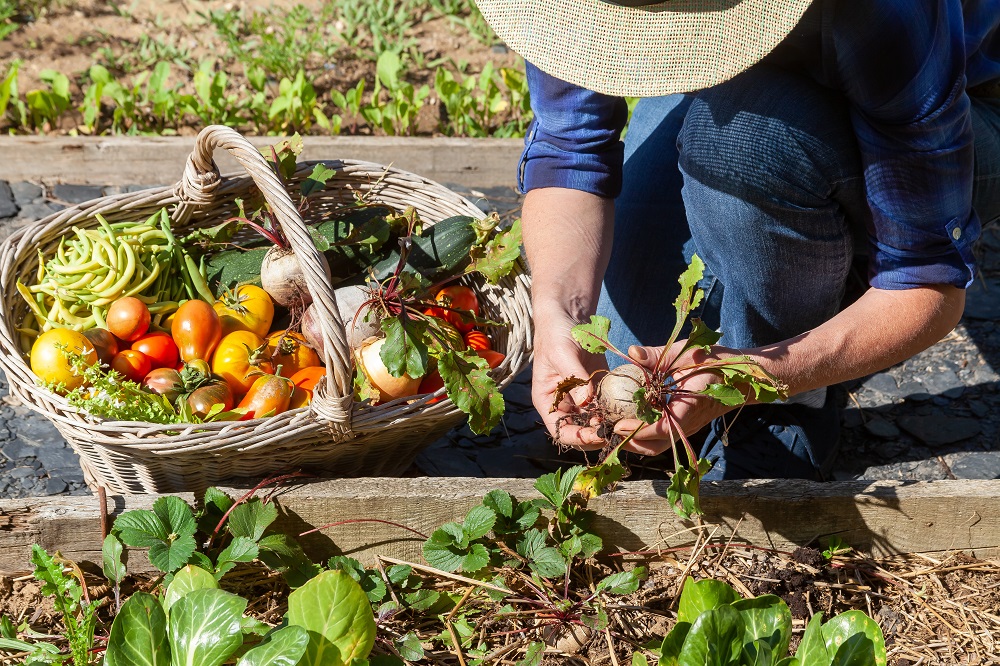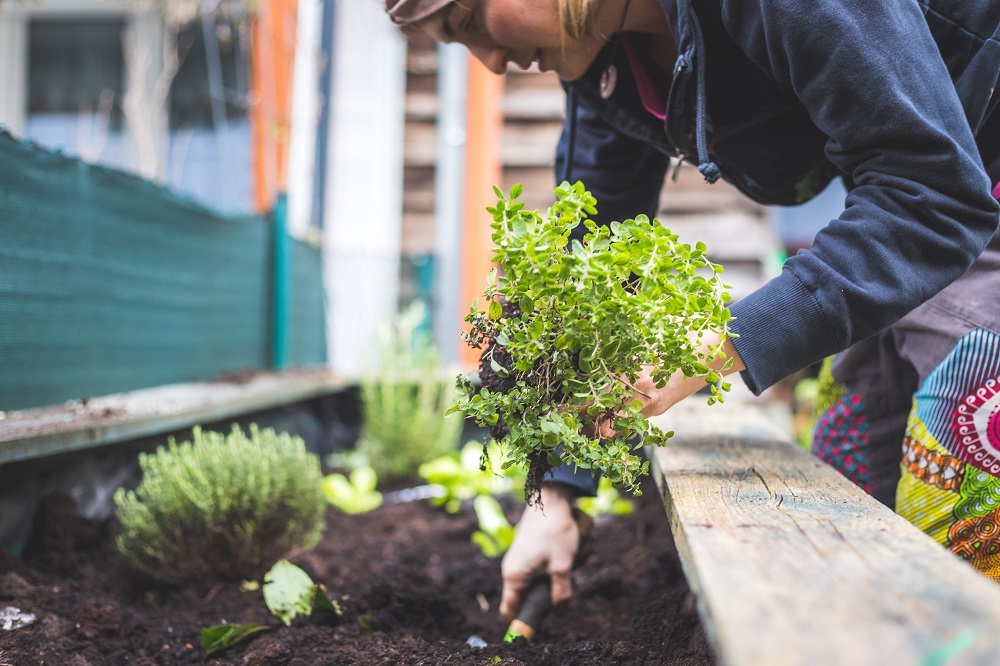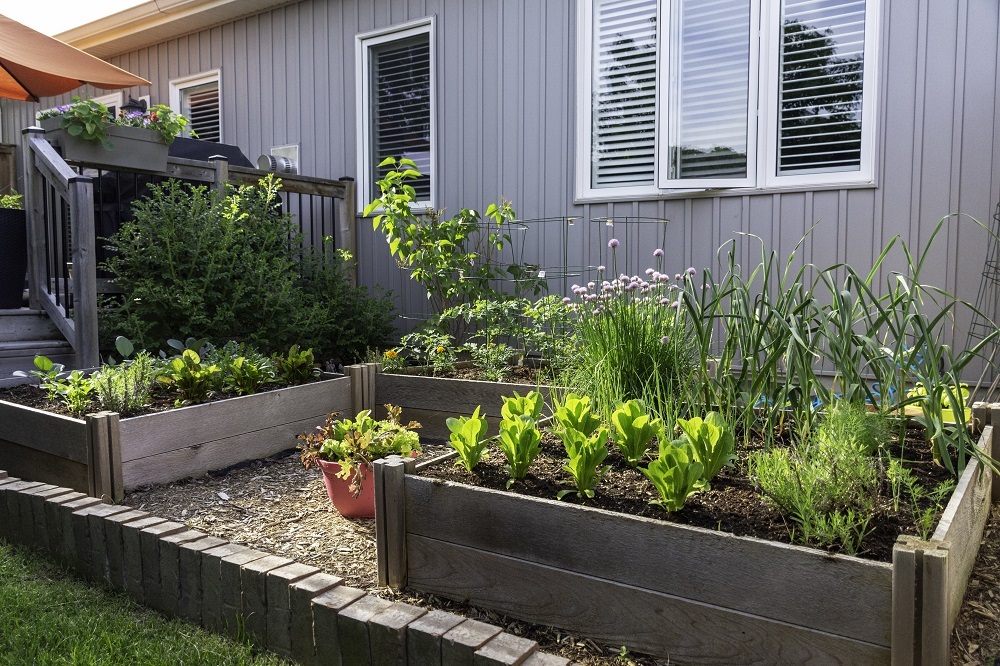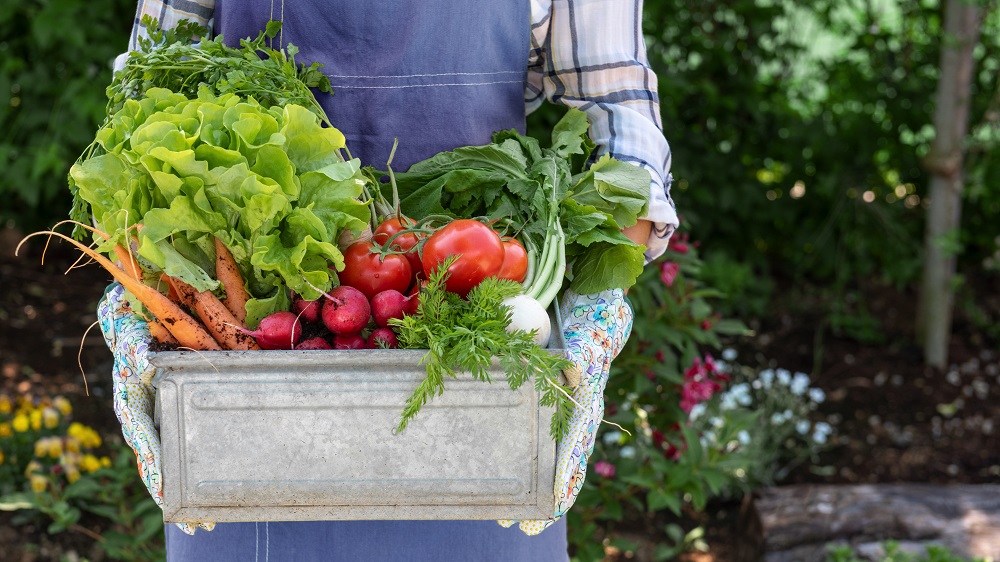Complete Guide to Building a Vegetable Garden in Western Australia

The idea of having a vegetable garden in your backyard is indeed fascinating. However, most people would turn away from it because they get overwhelmed with all the tasks involved.
In truth, you can have a successful vegie garden with little to no experience in gardening. With proper planning and guidance, you can build a garden that will thrive in the Western Australian soil.
This blog post will help you form an efficient plan, along with maintenance and other imperative tasks. This way, you are guaranteed to have a healthy and attractive vegetable garden that will survive no matter what season.
Planning Your Garden
Many beginners make the mistake of jumping into gardening without a plan. Most of the time, they will try to grow as many plants as they can during the first year. If you ask any experienced gardener, you will know that planting several will result in a huge disappointment. You will need to learn about a lot of things, including what the plants need and how to maintain them and the whole garden.
It can become overwhelming quickly, which is why you should plan your garden thoroughly. The first part is to understand your surroundings first. Learn more about Western Australia and the city you are in. Then, move on to the soil and its requirements. Here is a thorough guide that will help you with the planning process:
1. Climate
Did you know that Western Australia is the second-largest state in the world? Its size is almost half the size of the entire European continent. WA is mostly sunny all-year-round. Because of its size though, it has varying climates. In south WA, the area enjoys a Mediterranean climate while the east is warmer and drier. Meanwhile, the northern part of the state has tropical conditions.
It is always summer somewhere in the state. Therefore, WA can make one of the rarest claims in the world: a true year-round holiday destination.
The capital city, Perth, is typically bathed in sunshine with an average of nine hours of sun each day. Perfect blue skies appear at least 130 days annually, making it the official sunniest capital city in the whole country. February has the hottest temperature while the months of June to August are the coldest.
The southwest weather, on the other hand, which is around the Margaret River area, enjoys the abundant sunshine and mild weather. It has a unique Mediterranean climate with beach weather in December. Winter months are usually around eight to 16 degrees Celsius.
In the Coral Coast and Exmouth, the weather is a lot warmer all year round. It is the best destination for surfing and outdoor activities. The region also has a Mediterranean climate, particularly in the south. In the north, the climate is classified as subtropical.
As for the North West, including Broome, the area has what is known as the “winter sunshine.” The dry season lasts a long time from April to September. During the day, the temperatures can reach 29 degrees Celsius.
Meanwhile, the green season, which is around October to March, invites rainstorms and high humidity. The Golden Outback, including Esperance, has a climate from one part of the region to the next. Esperance has snow-white beaches while the north of Gascoyne-Murchison has a drier climate. Temperatures here can range from 15C to 37C in winter and summer respectively.
Keeping up with climate trends is not just for those who want to visit the state. It is also useful for gardening, especially when deciding which plants to choose from.
Understanding the climate means you have to familiarise yourself with plant hardiness first. This term signifies how well the plant can tolerate cold weather. Vegetables are categorised into the following:
- Extremely hardy
- Hardy
- Tender
- Extremely tender
Before you plant, you should first know which category the vegetable falls into. Extremely hardy vegies can tolerate frost and cold weather, so you can plant them four to six weeks before the last frost. Tender vegies cannot withstand cold weather but you can still grow them as long as they are protected from frost.
2. Soil
Many vegetables can thrive in Western Australian soil. The important thing is that you plant them at the right time of the year. Of course, you should provide them with proper nutrients and ample water.
Soils are categorised into three:
- Light – includes sand and gravel
- Medium – loamy types of soil mixed with sand and gravel (sometimes clay too)
- Heavy – clay loams or clay
The best for gardening is a loamy soil, which can retain water and nutrients effectively. Clays are dense and sticky. You will find it difficult to work with this type of soil after the rain. Light types are loose and drain freely, so they can let you cultivate the plants easily after irrigation or rain.
Perth metropolitan area and southern WA coastal districts have soils that are mostly deep and sandy. Many are infertile and can repel water as well. However, you can still work with them throughout the year because these soils do not set hard. As long as you keep the ground well aerated and drained, your vegetable garden will thrive.
3. Equipment
Small gardens do not need as many pieces of equipment as you may think. You will mostly require the following:
- Backyard spade
- Hoe
- Wheelbarrow
- Fork
A sprayer with at least one-litre capacity is also useful for weed and pest control.
4. Choosing the Right Plants
Crop planning is essential. Some plants can mature quickly and all at once while you will find some plants taking a long time to grow. You may want to try crop rotation, which is a method that means you will not grow the same crop in the same spot for a while. It helps avoid crop diseases.
Take note of the possible diseases and pests that you could encounter. For instance, if you have sandy soil, watch out for nematodes or eelworms that feed on the roots of the plants. Some crops, however, are not as susceptible to eelworms, such as crucifers and onions.
Also, think about maintenance when you choose your vegies. Some, such as carrots, do not need as much fertiliser as the others. Plan accordingly, so you do not have plants that all require heavy fertilising, such as cauliflowers and cabbages.
Planting can either be through seeds or seedlings. Direct seed sowing and thinning out the seedlings are a necessity for some crops, including carrots and radishes. Others will allow you to buy seedlings from reputable garden centres and nurseries. Ensure they are free from diseases and raised in weed-free and nutritious soil.

Choose plant varieties that match the growing conditions of the soil and garden. Read directions from the seed packets you have purchased to know the recommended sowing times for your region. Here is a list of crops to choose from for each month:
- January: beetroot, capsicum, celery, carrots, kale, eggplant
- February: leeks, lettuce, melons, radish
- March: beans (runner), broccoli, chillies, cauliflowers
- April: broad beans, onions, spring onions
- May: Brussels sprouts, parsnips, peas
- June: potatoes, silver beets, spinach
- July: swede, turnips, chives
- August: asparagus, kohl rabi, Jerusalem artichoke
- September: beans (dwarf), zucchini, melons
- October: squash, peas, turnips
- November: tomatoes, spring onions, beans (snake)
- December: zucchini, radish, carrots
It may be tempting to accept seedlings from your neighbours or friends, but try to avoid them as much as you can. The plants could carry diseases and nematodes, which can wreak havoc to your entire garden.
Preparing the Garden
With the crops planned and other elements ready, it is time to start gardening. You begin by preparing the soil first. Western Australian soils are not perfect but you can surely improve their conditions through fertilising with organic matter.
1. Fertiliser
Vegetables will grow well when you give them a balanced supply of nutrients. Three important nutrients are phosphorus, potassium, and nitrogen. Other minerals should be present as well but they should not exceed the major three. The soil should have small quantities of magnesium, calcium, and sulphur, copper, manganese, iron, zinc, boron, and molybdenum.
These nutrients can come from manufactured fertilisers and blends. They are considered the most potent because they contain more of the mentioned nutrients per unit of weight. These fertilisers are also easy to apply and are manageable for new gardeners.
Applying fertiliser means you also have to consider the amount you put. It is always better to have a fertiliser that contains all the major elements. Read the instructions, which can give you the information you need. Some fertilisers provide specific rates of application for various vegetables.
Two types of fertilisers are:
- Pre-plant: This fertiliser is often sold as a garden or starter fertiliser. As the name suggests, you apply this product before you start planting or sowing. This way, soil conditions are improved and yield can increase as well.
- Post-plant: Also known as a side-dressing, this type of fertiliser is applied throughout the life cycle of the plant. Many crops require a small of the product regularly to achieve satisfactory growth. You may want to look for a fertiliser with high amounts of phosphorous. This compound is not readily absorbed by the soil. Therefore, you should apply a sufficient amount of phosphorus that will last for the whole plant life.
If you use organic manure, it works best on sand type of soil, particularly those that are light and drain freely. Moisture breaks down gradually, allowing the crops to absorb the nutrients. A disadvantage is that they are difficult to handle and can be bulky as well. Manures can also invite flies into your garden if you do not manage them properly.
Using manure means you have to watch out for the organic matter and ensure your garden does not become a breeding ground for insects. Never leave waste on the garden bed’s surface. Manure is considered a post-plant dressing.
2. Composting
When you compost, it means that you let plant and animal materials to rot in a put, drum, or bin. Composting requires proper treatment so you can make acceptable waste:
- There should be adequate moisture.
- The compost should receive enough air, so the materials will rot. However, it should also be compact while preventing them from drying out.
- It should be warm inside the bin.
- Mineral fertilisers may be used if the materials do not have enough elements, such as nitrogen.
- Produce a little bit of alkaline or at least neutral alkaline reaction to achieve great results. You can get such a reaction from wood ashes or limestone.
Nitrogen will help the materials rot quickly since it encourages microorganisms, such as fungi and bacteria to flourish. If you cannot increase the supply of nitrogen, you can provide the materials with carbon dioxide gas instead.
3. Irrigation
Many plants cannot survive in dry conditions, such as onions, celery, and strawberries. Lower parts of the garden area will retain the most amount of moisture. Achieving consistent growth is easier if you can provide proper irrigation for the plants.
The amount of water your plants need will depend on the plant and your area. Dry and hot air will pull in more moisture from the soil and plants quicker than in cooler places. The type of soil you have will also dictate how much water your plants will eventually need.
A good tip to follow is to ensure plants receive sufficient water, which is about 2.54 cm or an inch every week. Therefore, water should cover the ground in the same amount each week and not each day. Test the water level by putting a finger in the soil. If it feels moist about five to eight centimetres below the surface, you are good to go.
There are numerous options for watering plants. The best way is to simply use a sprinkler or a watering can. If the area receives a lot of rain, you do not need to water the plants. Watering should be done at the base and not over the leaves. Many gardeners fear that the plants do not get enough water because the leaves are not wet. However, this method is helpful because it aids in preventing the growth of mildew and fungi.
Water the plants in the morning, which also helps in water conservation since it will not evaporate quickly. If you cannot water early in the morning, you can choose to water in the evening. Once again, you should avoid watering the leaves for the same reason as above.
Starting the Vegetable Garden
When everything is ready, it is now time to plant. It will be much easier to build the garden now because you have an idea about what plants to include.

Here are some planting techniques that you can try:
- If you have tender plants, including peppers, eggplant, tomatoes, and basil, you will need to place these fussy plants in the best spot. They should receive adequate sun. You can also plant them near a south-facing wall, which will provide them with enough heat and boost their yield.
- After the tender plants, you should add the vines next. These plants, such as melons and squash, will roam around the garden. Therefore, you should place them in an area at the edge of the garden beds. It is especially important if the vines have broad leaves. Those leaves should not cover the other plants, so keep the vines away.
- Peas, beans, and other vertically-climbing plants need support. Once again, have them in an area where they will not shade other plants. However, if you build the garden in an area that receives plenty of sunlight, you may want to have these climbers in the shade. The very hot summers can damage and even kill them, especially cool-season crops like spinach and lettuce.
- You may also want to consider pollination. In this case, assess which plants should be near others, which will allow them to pollinate well. It helps in bearing fruits, so you can harvest a better yield. An example is sweet corn, which should be in blocks to allow it to produce full cobs.
- Succession or successive planting is a popular method in vegetable gardening, particularly for those with smaller spaces. It is also a good option if you want to get crops throughout the season.
- There are different ways to achieve succession planting, including planting the same vegetable every two to four weeks. Another way is to replace the crops with short-growing seasons, such as peas, with eggplants that grow later in the season. The best plants for this method are basil, beets, carrots, kale, and lettuce.
- Companion planting is also a good option, but it does take a little bit of skill and practice. You need to carefully place the plants that can benefit one another. For instance, you can train climbing plants to crawl up taller plants. This way, you do not need to provide them their own space, allowing you to maximise the area you have. Another is to plant vegies with different root growth depths, so they do not compete for water and nutrients.
Another thing to consider is harvesting. Which among the vegetables and crops do you want to harvest regularly? Perhaps you need tomatoes, herbs, and other ingredients for salads. You can strategically place these plants near your kitchen, so you can easily harvest them when needed. Also, it helps that they are close to the kitchen, which lets you keep an eye on them in case of slugs and weeds.
Harvesting
Speaking of harvesting, you cannot just harvest right away. You need to know when the right time is, so the activity does not negatively affect the crop yield and quality.

Here are some tips when harvesting from your vegetable garden:
- Many vegies reach the peak of their quality even while they are still immature. Some examples are zucchinis, beans, potatoes, peas, and salad greens. Meanwhile, tomatoes, watermelons, melons should be picked when ripe. This way, the flavours would have fully developed before taking them out.
- Make sure you do not harvest when it is raining, especially crops like tomatoes, cucumbers, and those that are prone to diseases.
- Stay on top of harvesting, especially when you have plants like zucchinis. They can grow from a few centimetres to nearly a metre. Harvest as frequently as you can and do not wait for them to mature. Doing so helps give you a larger yield and also improves the taste.
- Use the right tools when you harvest. Many vegetables may not need tools, such as beans, kale, and peas. However, some crops, such as potatoes, carrots, and cucumbers will need you to use a sharp knife. You may also want to have a garden fork ready, pruning shears, and other implements to prevent damaging the plants.
When you harvest the plants, you should also look for certain problems, including yellow leaves and rotting fruit. Get rid of these parts to avoid damaging the plant.
Insects and Other Nuisance
No matter how pristine your garden is, some invaders will eventually visit and even linger for long periods. Pests, birds, and diseases are among the biggest challenges. Bugs, critters, and other insects can be challenging even for seasoned gardeners. The best way to prevent them from infesting your garden is to prepare and be alert.
You can prevent these pests from damaging your garden when you are prepared in advance. Sun, nutrients, and water will help reduce these issues. Not all insects are destructive, such as lady beetles since they eat the other insects that could harm your plants. Aphis lions eat aphids, wasps kill caterpillars, ground beetles prey on slugs and caterpillars, and green lacewings destroy aphids and whiteflies.
Some insects suck, chew, or bore into the plants. It is essential that you follow certain practices even before the infestation:
- Remove dead plants and rotten produce.
- Plant hardy vegetables or those suitable for Western Australia.
- Follow water and fertiliser recommendations.
- Perform crop rotation, which lowers the population of insects that chew on your plants.
Aside from insects, you will also have to prevent diseases that plague your vegies:
- Damping-off: Fungi in the soil attack seedlings and germinating seeds, causing them to die.
- Fungi in older plants: Stem and leaf blights and spots are common in carrots, potatoes, melons, squash, and tomatoes.
- Viruses: Signs include stunted plant growth and mottled and deformed leaves.
- Nematodes: These worm-like creatures live in the soil and feed on the roots of the plant.
Controlling diseases will depend on the specific type of disease you are dealing with. For instance, with nematodes, you may need to use a soil fumigant or even change the location of your garden.
The key is to take proper care of the plants. It allows them to become stronger and be more resistant to different diseases, including those caused by fungi. You will also have to control weeds and pests. Mulching may be required to ensure the fruits do not rot. Avoiding the leaves when watering and leaving your garden alone when it is wet will help prevent these diseases.
As for birds, they mostly visit gardens with fruit trees. Large birds, such as cockatoos and galahs search for eucalyptus and other tall trees where they can rest. They will usually stay to chew on the leaves and branches. They are mostly harmless, along with many common birds, especially in the Perth area:
- New Holland
- Willie Wagtail
- Silvereye
- Grey fantail
- Western Rosella
These birds will merely feed on nectar or honey and drink water in your garden. Others may eat fruits but will usually stay away from vegies. Nevertheless, some birds are a nuisance, including blackbirds with most of its species. They eat insects and tiny animals but they will also eat grains and seeds, along with lettuce, sweet corn, and other vegetables.
Keeping them away can be a challenge, but still a necessity. You can try aluminium screening where you bend narrow screens and place them over your seedlings or seeds. Another method is hardware screening, which you will cut and form hoops for the seedlings. Paper bags for sweet corns can be placed over the ears. Another way to ward off birds is through stakes and flags, which you will place every several metres in your garden.
Aside from the mentioned problems, you may also be worried about weeds. Unfortunately, weeds are difficult to prevent. The good news is that you do not need to remove them, as long as they do not choke your plants. You can weed every week to make sure they do not go out of control.
Using good quality seedlings and seeds is also helpful. They are healthier and sturdier, so they can withstand attacks from other creatures. Experienced gardeners will tell you that you should maintain good seedbed hygiene, which works wonders in preventing diseases of plants. It includes removing dead and diseased plants, removing weeds regularly, and treating with the right products.
Give It a Try Today!
Vegetable gardening comes with many responsibilities. It can be tiring and you can also fail with your attempts. However, all the stress and exhaustion will go away when you see that your garden is healthy and thriving.
Nothing beats eating a home cooked meal using your own veggies!


